Prolog provides basic arithmetic tools for integers like addition, subtraction, multiplication and division. It can also compare integers using operators like <, <=, =:= and /=. Lists and their lengths can be calculated recursively or using an accumulator. Finding the maximum element in a list can be done by recursively traversing the list with an accumulator to track the highest value seen so far.
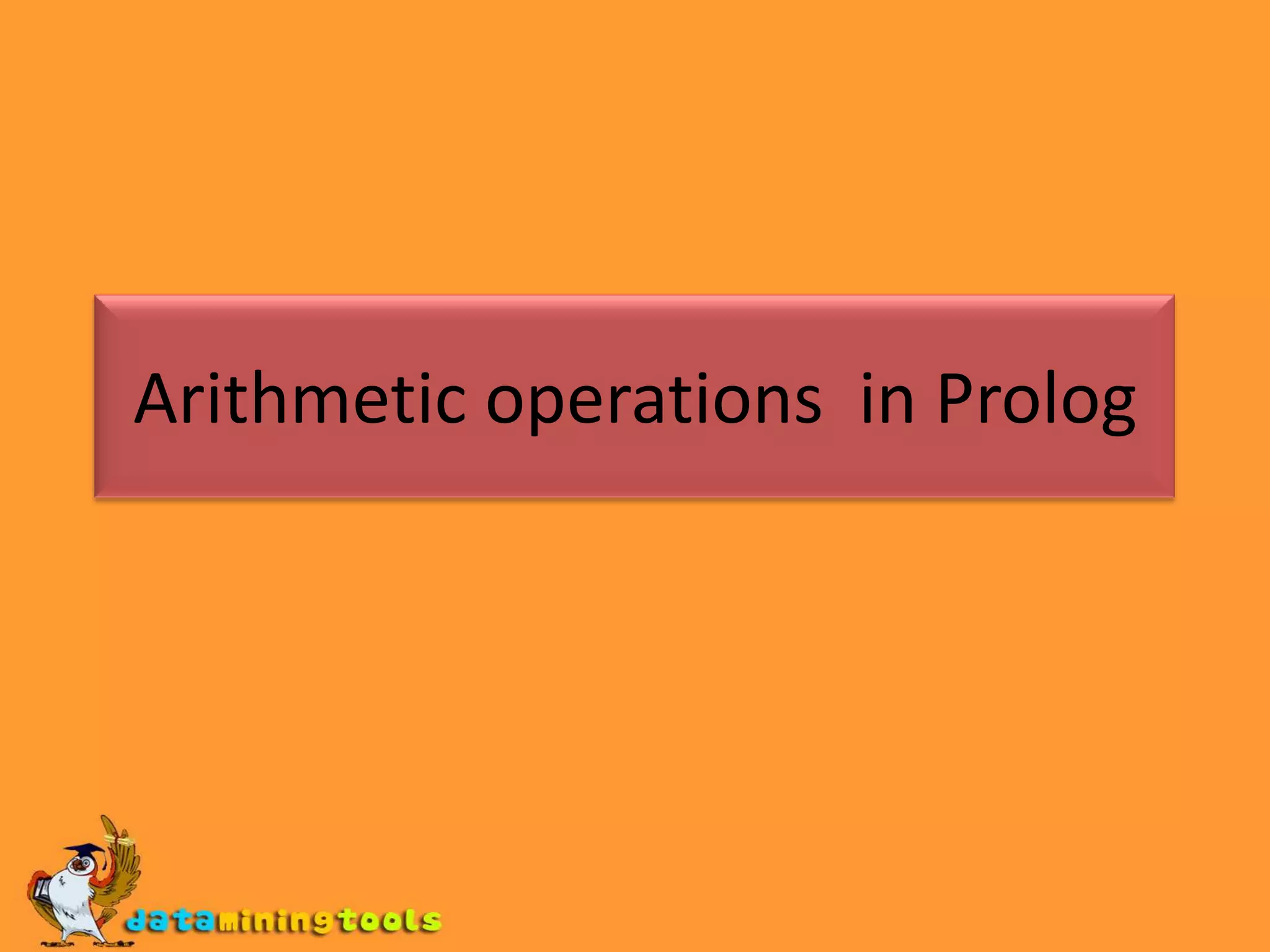

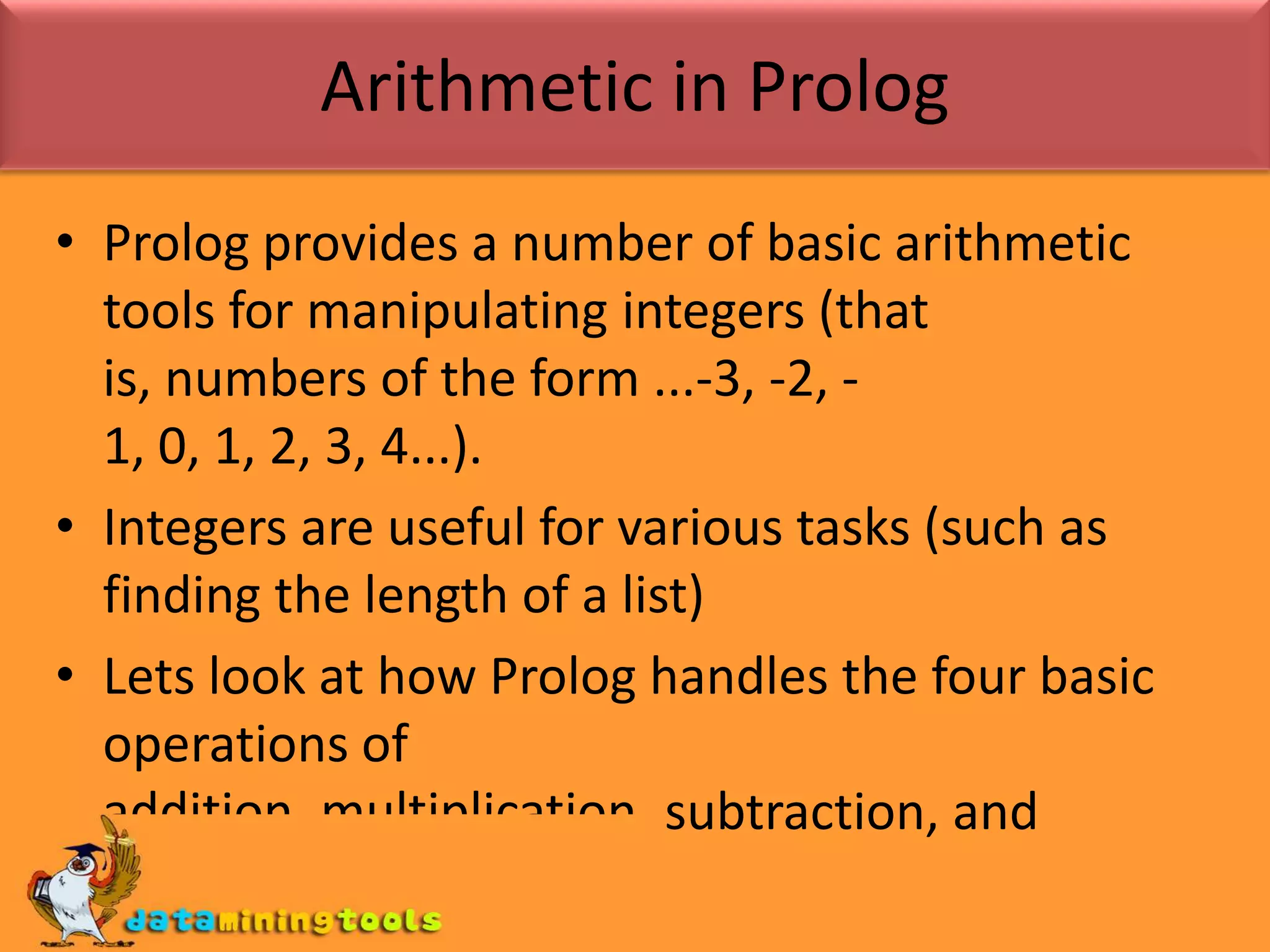
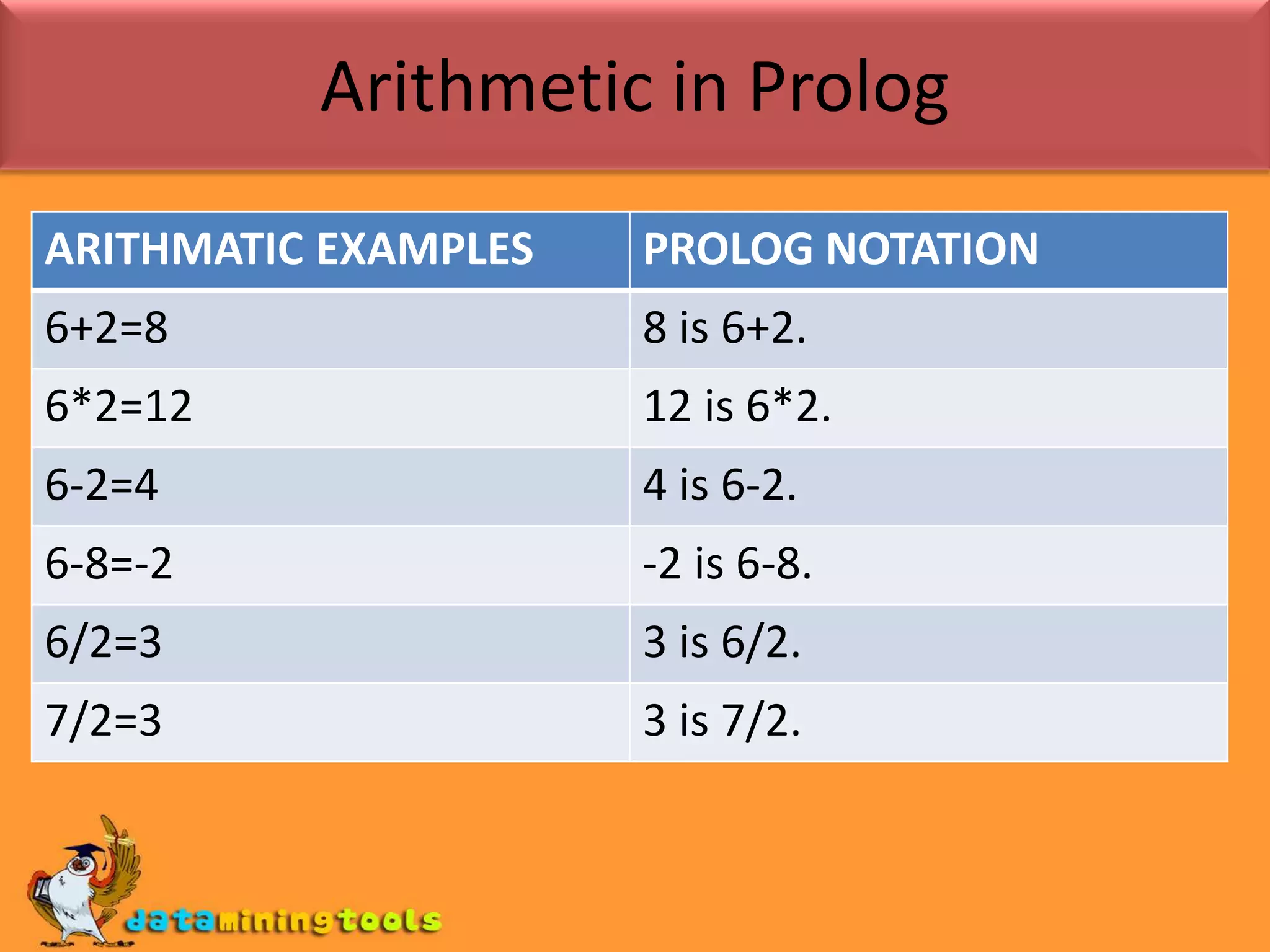

![Arithmetic and ListsLength of the list is recursive defined as:1. The empty list has length zero.2. A non-empty list has length 1 + len(T), where len(T) is the length of its tail.This definition is practically a Prolog program already. Here's the code we need:len([],0).len([_|T],N) :- len(T,X), N is X+1.On posing the query:?- len([a,b,c,d,e,[a,b],g],X).we get X = 7](https://image.slidesharecdn.com/arithmaticoperationsinprolog-100328214033-phpapp02/75/PROLOG-Arithmetic-Operations-In-Prolog-6-2048.jpg)
![We can use an accumulator to calculate the length of a list.We shall define a predicate accLen3/ which takes the following arguments.accLen(List,Acc,Length)Here List is the list whose length we want to find, and Length is its length (an integer).Acc is a variable we will use to keep track of intermediate values for length(so it will also be an integer).We can define a predicate which calls accLen for us, and gives it the initial value of 0:leng(List,Length) :- accLen(List,0,Length).So now we can pose queries like this:leng([a,b,c,d,e,[a,b],g],X).](https://image.slidesharecdn.com/arithmaticoperationsinprolog-100328214033-phpapp02/75/PROLOG-Arithmetic-Operations-In-Prolog-7-2048.jpg)
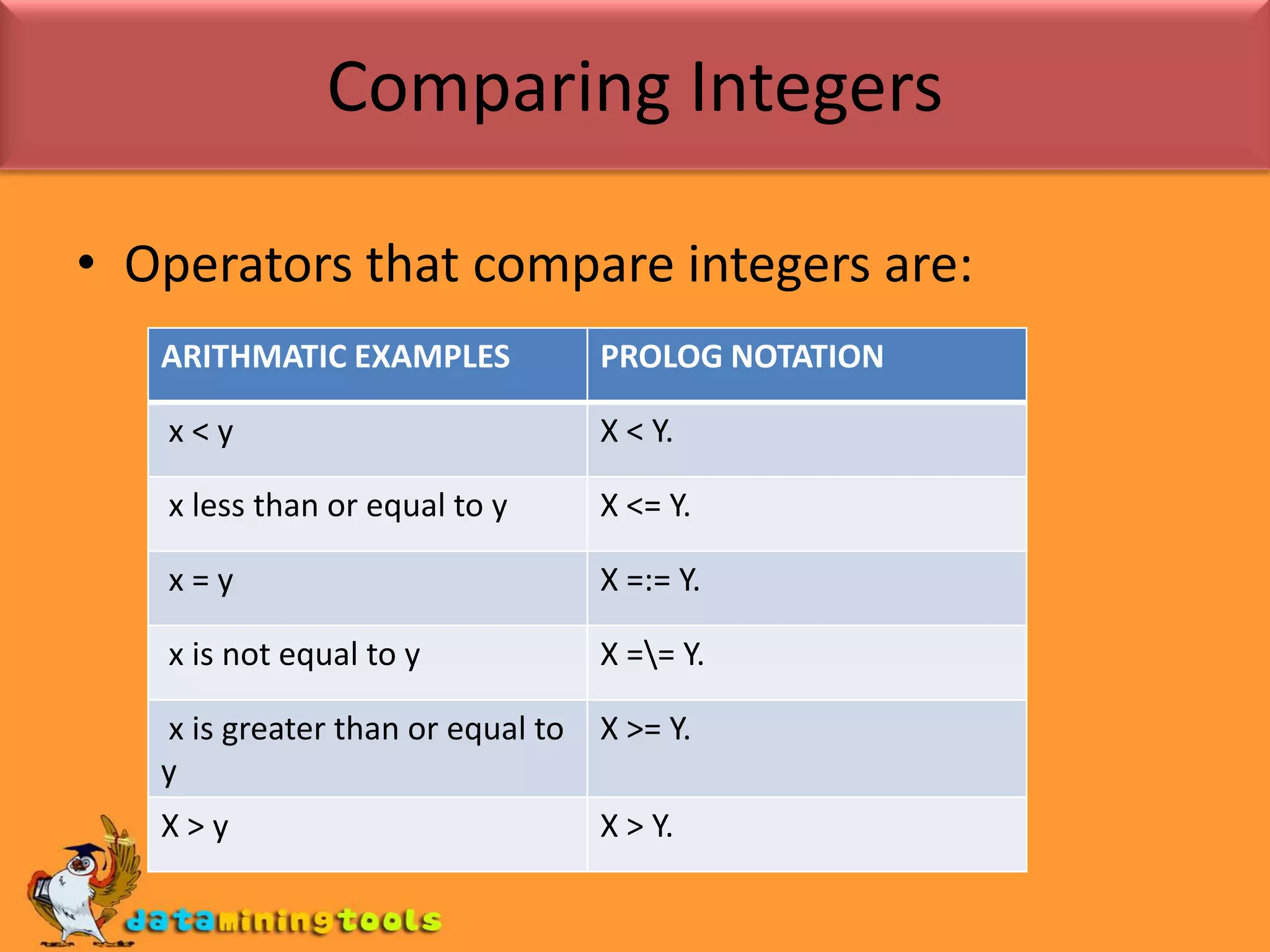
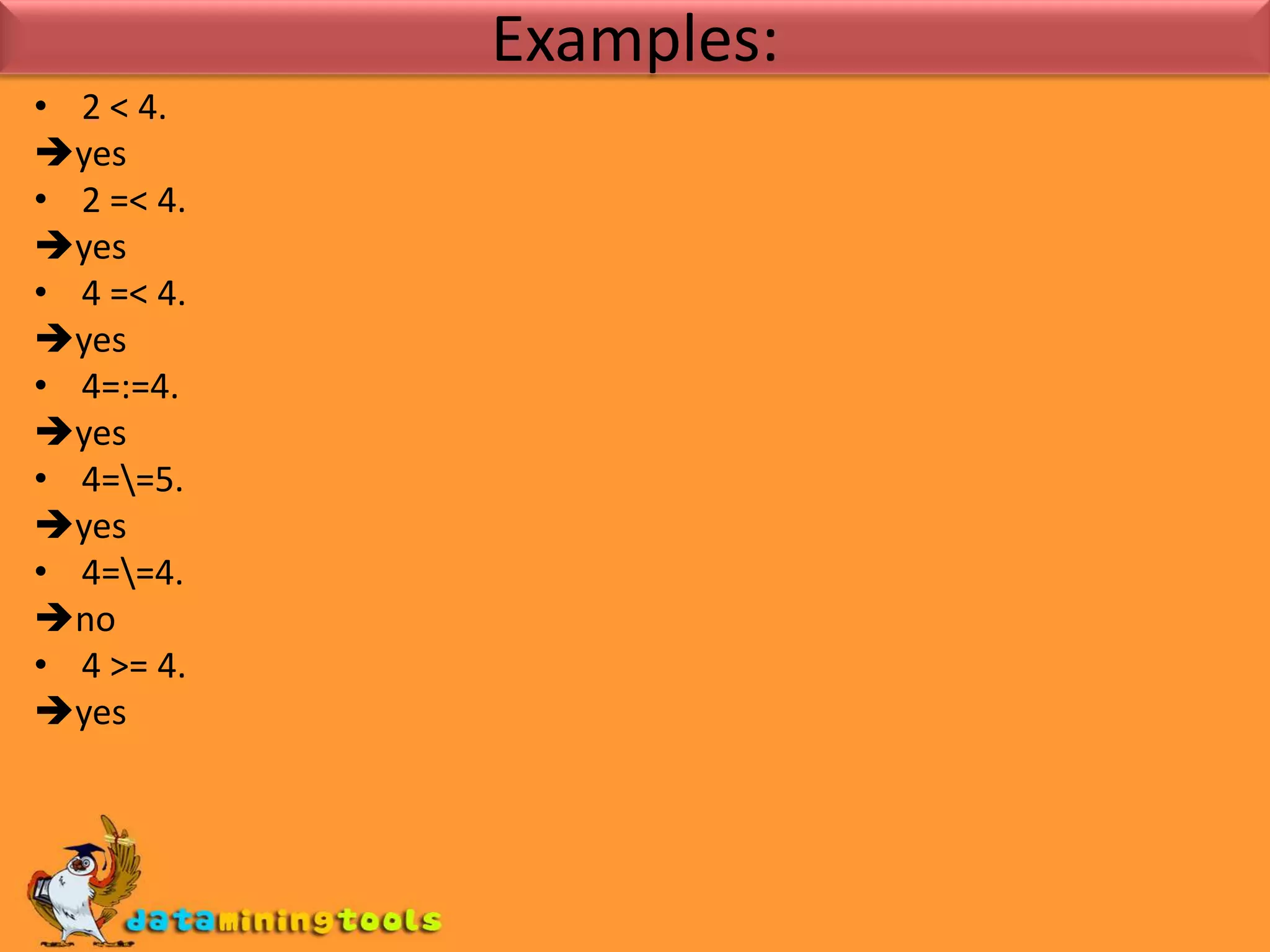
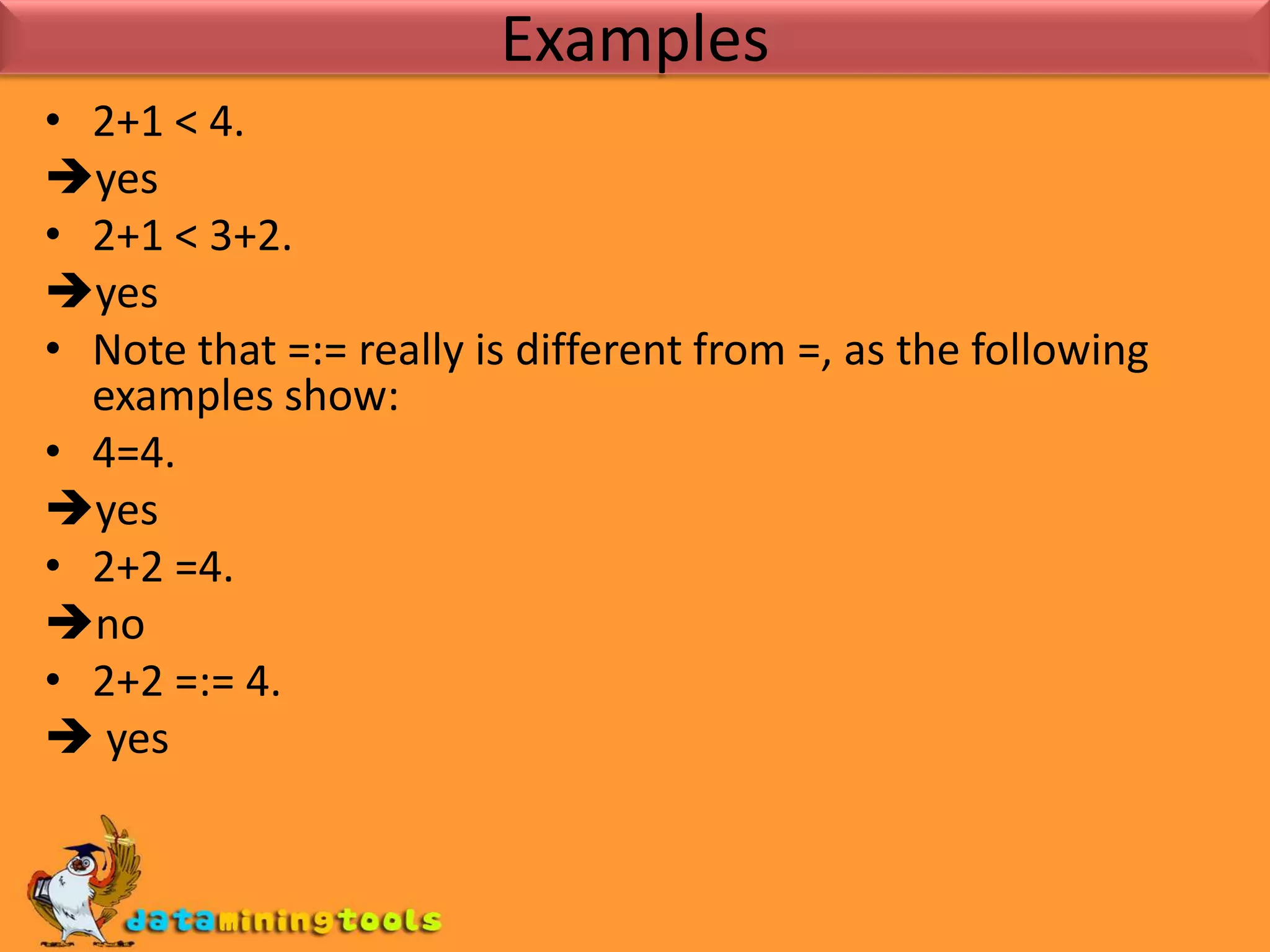
![We can define a predicate which takes a list of non-negative integers as its first argument, and returns the maximum integer in the list as its last argument.We can use an accumulator. As we work our way down the list, the accumulator will keep track of the highest integer found so far. If we find a higher value, the accumulator will be updated to this new value. When we call the program, we set accumulator to an initial value of 0. Here's the code. Note that there are two recursive clauses:accMax([H|T],A,Max) :-H > A,accMax(T,H,Max).accMax([H|T],A,Max) :-H =< A,accMax(T,A,Max).accMax([],A,A).](https://image.slidesharecdn.com/arithmaticoperationsinprolog-100328214033-phpapp02/75/PROLOG-Arithmetic-Operations-In-Prolog-11-2048.jpg)
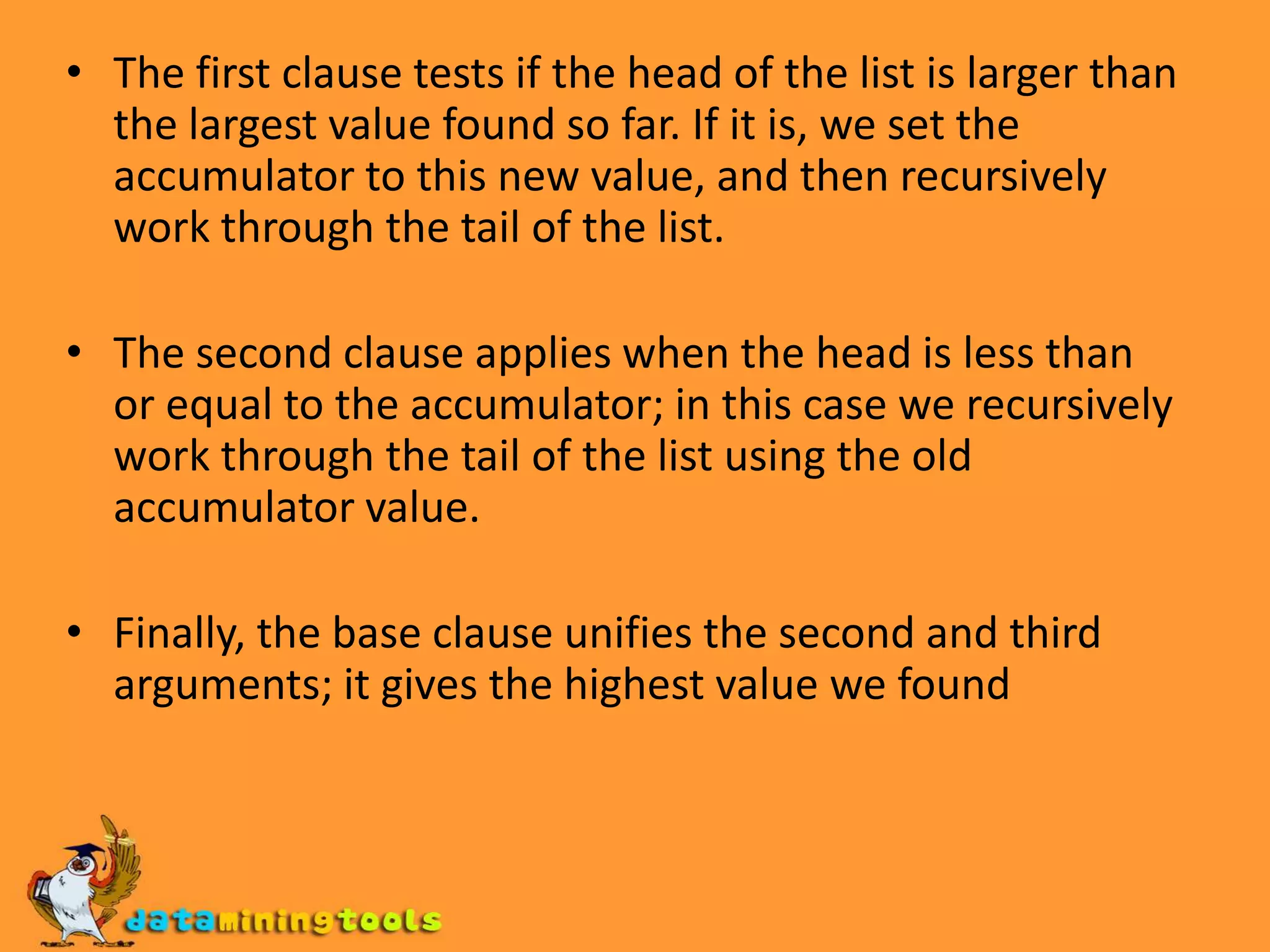
![while going through the list to the last argument. Here's how it works:accMax([1,0,5,4],0,_5810)accMax([0,5,4],1,_5810)accMax([5,4],1,_5810)accMax([4],5,_5810)accMax([],5,_5810)accMax([],5,5)suppose we give a list of negative integers as input. Then we would haveaccMax([-11,-2,-7,-4,-12],0,Max).Max = 0 yes](https://image.slidesharecdn.com/arithmaticoperationsinprolog-100328214033-phpapp02/75/PROLOG-Arithmetic-Operations-In-Prolog-13-2048.jpg)
